Have you ever wondered how it all began?
The question of the origin of the universe has been a subject of fascination and debate for centuries.world reaction.
For many, the answer lies in the opening pages of the Bible, in the account of the creation of the world according to Genesis 1-2.
This story has not only influenced culture and religion, but also offers a profound theological and philosophical reflection on our existence.
Presentation of the Creation of the world
The creation of the world in the Bible is a topic of great importance, not only for its spiritual relevance, but also for its impact on history and culture.
The Genesis account gives us a glimpse of how God created the universe in six days and rested on the seventh.
This story has been interpreted in various ways over the centuries, providing a foundation for Judeo-Christian theology and a source of inspiration for countless believers.
Objective of the article on the Creation of the world
The objective of this article is to explain the story of the cworld reaction according to Genesis 1-2 and reflect on its theological and philosophical implications.
Throughout this article, we will explore each day of the cworld reaction, analyzing its meaning and relevance both in the biblical context and in our daily lives.
Day One: Light and Darkness

The beginning of everything in the cworld reaction
To understand the beginning of the world according to the Bible, it is essential to examine how creation is presented in the first verses.
Here I explain in detail some key aspects:
1. The initial phrase of the cworld reaction
“In the beginning God created the heavens and the earth.” With these words, the account of the creation of the world begins.
This phrase suggests the beginning of everything we know, a moment in time where nothing existed but God.
It invites us to reflect on the concept of an absolute principle and the existence of an omnipotent divine entity.
2. The term “principle”
The term “beginning” suggests the absolute beginning of the cworld reaction and the history of the universe.
This starting point reminds us of the transcendence of God, who existed before everything and who, with his will, gave rise to reality as we know it.
It is a reminder of God's power and eternity, which transcends our understanding of time and existence.
The creation of light in the cworld reaction
The creation of light is a fundamental act that establishes a basic structure in the universe. Here's a detailed explanation:
1. The divine declaration
“And God said, ‘Let there be light,’ and there was light.” This verse highlights the power of God’s word.
With a simple statement, light was created, separating from darkness.
This act not only marks the beginning of time, but also establishes a fundamental duality in the universe: light and darkness.
2. The separation of light and darkness
The creation of light represents the introduction of order into primordial chaos.
The separation of light and darkness symbolizes the establishment of a regular cycle, which will be essential for life and the organization of the cosmos.
It reflects the idea that light (representing good and clarity) and darkness (representing mystery and potential confusion) have their place in divine creation.
The first day of the cworld reaction
The first day of creation establishes the basis of the diurnal cycle we know today. Here's a detailed explanation:
1. Naming
“And God called the light Day, and the darkness he called Night.” Here we see the establishment of the diurnal cycle, a temporal structure that continues to this day.
The naming of light and darkness implies an act of domination and order on the part of God, indicating that He has complete control over creation.
2. The concept of time
Reflecting on the concept of time in creation reminds us of the importance of every moment and how each day is an opportunity to experience both light and darkness in our own lives.
This daily cycle invites us to live consciously, recognizing the structure and order that God has established in the world.
Day Two: The Firmament

To better understand the creation of heaven according to the biblical account, it is essential to explore the details of this process.
Here I explain in detail some of the most important aspects:
Creation of heaven
“Let there be an expanse in the midst of the waters.” God creates a firmament to separate the waters above from those below.
This act not only organizes the primal chaos, but also establishes the heavens as a separate domain.
Here I explain how this process develops:
1. The firmament as separation
God orders the creation of a firmament, or expanse, that separates the waters below from the waters above.
This implies an organization of the initial chaos, dividing the waters into two distinct domains.
This act of separation is fundamental to the structure of the universe according to the biblical narrative.
2. The establishment of the heavens
In creating the firmament, God not only organizes chaos, but also establishes a separate domain called heaven.
This domain becomes an essential part of the cosmos, clearly distinguishing between the earth and the heavens.
The term “heaven” not only refers to a physical aspect, but also has spiritual and transcendental connotations.
The second day of the cworld reaction
The firmament, called heaven, plays a crucial role in the cworld reaction.
Separate and organize, creating a habitable space for the life that will soon fill the earth.
The implications of the term “heaven” go beyond the physical, also suggesting a spiritual and transcendental dimension.
Here I explain how this process develops:
1. Organization and habitability
The firmament creates an organized space that allows the existence of life on Earth.
The separation of the waters allows for the formation of a habitable environment where all forms of life will eventually develop.
This act of organization is key to structuring the world and preparing for life.
2. Spiritual dimension of heaven
The term “heaven” in this context not only refers to the atmosphere or visible space, but also suggests a spiritual dimension.
The sky becomes a symbol of the divine and the transcendental, a place associated with the presence of God.
This duality of heaven, as a physical and spiritual place, adds a layer of deep meaning to the creation story.
By expanding on these points, we can appreciate the complexity and depth of the biblical creation story, seeing how each divine act not only organizes the physical universe but also establishes spiritual and transcendental foundations for human existence.
Day Three: Land, Sea and Vegetation

To better understand the crucial steps of cworld reaction According to the biblical account, it is essential to explore the details of these processes.
Here I explain in detail some of the most important aspects:
Appearance of dry land in the cworld reaction
“Let the waters under the heavens be gathered together into one place.”
This divine mandate gives rise to the formation of seas and continents, separating dry land from water.
The creation of solid land is a fundamental step for the development of life.
Here I explain how this process of c developsworld reaction:
1. Formation of seas and continents
God commands the waters to gather in one place, allowing dry land to appear.
This act establishes the basic geography of the planet, creating oceans and continents.
The separation of land and water is essential for the development of diverse ecosystems and for the future habitability of the Earth.
2. Preparation for life
The appearance of dry land provides the necessary foundation for terrestrial life.
This land will be where plants, animals and eventually humans will develop.
This step shows divine planning in creating an environment suitable for life.
Creation of vegetation in the cworld reaction
“Let the land produce vegetation, plants yielding seed.” Vegetation is the first form of life created, providing food and sustenance.
The diversity of plants and trees reflects the richness of creation and divine provision.
Here I explain how this process develops:
1. Introduction of plant life
God commands the earth to produce vegetation, including green grass, seed-bearing plants, and fruit trees.
This act marks the beginning of life on the planet, establishing a foundation for other living beings.
Vegetation also plays a crucial role in oxygen production and maintaining ecological cycles.
2. Diversity of plants and trees
The creation of a variety of plants and trees reflects the richness and complexity of divine design.
Every plant and tree has a specific purpose, whether it is to provide food, medicine, or contribute to the beauty of the landscape.
This diversity is a testimony to God's provision and wisdom in creating a balanced ecosystem.
The third day of the cworld reaction
The importance of vegetation for life cannot be underestimated.
The biodiversity created on this day ensures that the Earth will be a fertile and habitable place for future creatures.
Reflecting on biodiversity invites us to appreciate the interconnectedness of all life forms.
Here I explain how this process develops:
1. Fertility of the soil
The introduction of vegetation makes the land a fertile place, capable of supporting diverse forms of life.
The presence of plants and trees ensures that there will be enough food and resources for animals and, eventually, for humans.
This act of creation demonstrates God's continual provision for all creatures.
2. Interconnectedness of life
The creation of vegetation on the third day underscores the interconnectedness of all life forms.
Plants not only provide food, but also create habitats and contribute to ecological balance.
This interdependence reminds us of the importance of caring for and preserving nature as part of God's plan.
Expanding on these points, we can appreciate the depth and planning in the biblical creation account, seeing how each divine act not only organizes the physical world but also sets the stage for an abundant and connected life.
Day Four: Bright Stars

To better understand the crucial steps of creation according to the biblical account, it is essential to explore the details of these processes.
Here I explain in detail some of the most important aspects:
Creation of the stars in the cworld reaction
“Let there be lights in the expanse of the heavens.” God creates the sun, moon, and stars to illuminate the earth and separate day from night.
These celestial bodies also serve as signs for the seasons, days, and years.
Here I explain how this process of c developsworld reaction:
1. Illumination of the earth
God creates the sun to rule the day and the moon to rule the night, providing a constant source of light for the earth.
Light is essential for life, facilitating biological processes such as photosynthesis in plants.
This act of creation ensures that the earth is well lit, allowing living things to thrive in day and night cycles.
2. Separation of day and night
The creation of the stars establishes a clear distinction between day and night, marking the rhythm of time on Earth.
This separation is fundamental to the organization of time and the natural cycles that regulate life on the planet.
Day and night provide a constant rhythm that allows living beings to develop patterns of activity and rest.
Functions of the stars in the cworld reaction
The stars not only provide light, but also mark the passage of time and the seasons, allowing living beings to regulate their biological cycles.
The precision of the universe in its operation is a marvel that continues to amaze us.
Here I explain how these functions are developed:
1. Mark the passage of time
The movement of the sun, moon, and stars allows for the measurement of time, including days, months, and years.
This system of measuring time is essential for the organization of human and natural activities.
Natural cycles, such as the seasons, depend on the position and movement of these celestial bodies.
2. Regulation of biological cycles
Light and darkness, as well as seasonal changes, influence the biological cycles of all living beings.
The stars help regulate sleep and wake patterns, animal migration, and plant growth cycles.
This interdependence demonstrates the precision and meticulous design of the universe, where each element has a specific purpose.
The fourth day of the cworld reaction
Reflecting on the precision of the universe leads us to consider the relationship between science and faith.
The harmony and order observed in the heavens invite us to see the hand of an intentional and meticulous Creator.
Here I explain how this reflection on the creation of the world develops:
1. Relationship between science and faith
Scientific observation of the stars and their functioning reveals an impressive precision that suggests intelligent design.
Faith leads us to see this design as the work of a Creator who established precise and harmonious natural laws.
This perspective invites us to integrate scientific knowledge with a spiritual appreciation of the universe.
2. Harmony and order in the universe
The observable order in the movement of the stars and the regularity of natural cycles reflect an intentional design.
This harmony reminds us that the universe is not chaotic, but follows a meticulous plan that sustains life.
Reflecting on this order invites us to see the greatness of the Creator and to live in harmony with the natural laws established by Him.
Expanding on these points, we can appreciate the depth and planning in the biblical creation account, seeing how each divine act not only organizes the physical world but also sets the stage for an orderly and connected life.
Day Five: Marine Life and Birds

To better understand the crucial steps of creation according to the biblical account, it is essential to explore the details of these processes.
Here I explain in detail some of the most important aspects of world creation:
Creation of marine beings in the creation of the world
“Let the waters bring forth living creatures.”
Marine life is created in all its diversity, from fish to large ocean creatures.
This act reflects God's abundance and creativity.
Here I explain how this process develops in the creation of the world:
1. Diversity of marine life
God commands the waters to produce a variety of living beings, including fish, mollusks, and large sea creatures.
This diversity shows God's creativity and power in filling the oceans with life.
Each marine species plays a specific role in the ecosystem, contributing to the balance and health of the marine environment.
2. Provision and sustenance
The creation of marine life ensures an abundant source of food and resources for other creatures.
The oceans, teeming with life, become a self-sufficient system where each being plays a crucial role in the food chain.
This divine act demonstrates God's provision and ability to create a self-sustaining world.
Creation of birds at the creation of the world
“Let the birds fly over the earth.”
Birds are created to fill the skies, perfectly adapted to their environment.
Its existence reminds us of the beauty and complexity of life.
Here I explain how this process of the creation of the world develops:
1. Adaptation to the environment
God creates birds to fly over the earth and fill the skies, demonstrating their ability to adapt to different environments.
Birds are designed with unique abilities like flight, which allows them to explore and inhabit different ecosystems.
This adaptation reflects God's wisdom in creating living beings perfectly suited to their environments.
2. Beauty and complexity
The variety of birds, with their vibrant colors and melodious songs, adds beauty to the natural world.
Each bird species, from the hummingbird to the eagle, has unique characteristics that contribute to the diversity and complexity of the ecosystem.
This beauty and complexity invite us to appreciate and protect wildlife as part of God's creation.
The fifth day of the creation of the world
The interdependence of creatures is evident.
Marine life and birds are part of a balanced ecosystem, where each creature plays a crucial role.
Reflecting on this interdependence leads us to appreciate the intricate web of life.
Here I explain how this reflection develops:
1. Balanced ecosystem
Marine life and birds coexist in a balanced ecosystem, where each living being depends on others for its survival.
This interdependence ensures the stability and health of the environment, demonstrating God's intentional design.
By observing how they interact and depend on each other, we can see the hand of a Creator who has designed the world with precision and purpose.
2. Intricate web of life
The creation of sea creatures and birds on the fifth day underscores the complexity and interconnectedness of all life forms.
Every being, from the smallest fish to the largest bird, has a role to play in maintaining natural balance.
Reflecting on this web of life invites us to value and protect biodiversity as an essential part of God's plan for the world.
We can appreciate the depth and planning in the biblical creation account, seeing how each divine act not only organizes the physical world but also sets the stage for an orderly and connected life.
Day Six: Terrestrial Animals and Humans

To better understand the crucial steps of creation according to the biblical account, it is essential to explore the details of these processes.
Here I explain in detail some of the most important aspects of the creation of the world:
Creation of land animals at the creation of the world
“Let the earth bring forth living creatures according to their kinds.”
Land animals, from mammals to reptiles, are created on this day.
Each species is designed to inhabit the earth and contribute to the ecosystem.
Here I explain how this process of creating the world develops:
1. Diversity of terrestrial species
God commands the earth to produce living beings according to their kinds, resulting in a great variety of mammals, reptiles, and insects.
Each species has a specific role in the ecosystem, from small insects to large mammals.
This diversity ensures that the terrestrial ecosystem is balanced and functional, with each creature contributing to the well-being of the environment.
2. Adaptation and ecological functions
Each created species is perfectly adapted to its environment, with physical characteristics and behaviors that allow it to survive and thrive.
Animals play crucial roles, such as pollinating plants, dispersing seeds, and controlling populations of other species.
This adaptation and functionality demonstrate divine wisdom in designing an interconnected and sustainable world.
Creation of the human being in the creation of the world
“Let us make man in our image, according to our likeness.”
The creation of the human being is a special act.
Unlike animals, human beings are created in the image of God, with the capacity to reason, create, and love.
Here I explain how this process of creating the world develops:
1. Creation in the image of God
God creates human beings with unique characteristics that reflect His image, including the capacity for rational thought, creativity, and morality.
This establishes a clear distinction between humans and the rest of creation, giving them a special position in the world.
Being created in God's image also implies an innate capacity to relate to Him and to other human beings in meaningful ways.
2. Ability to reason and love
Humans have the ability to reason, make decisions, and create new things, reflecting God's creative nature.
They also have the capacity to love and establish deep and meaningful relationships, both with other humans and with God.
This capacity to love and reason is fundamental to the role of humans as caretakers and stewards of creation.
The sixth day of the creation of the world
The role of human beings in creation is significant.
We are called to be stewards of the earth, caring for and protecting all forms of life.
This concept of stewardship implies great responsibility and invites us to live in harmony with creation.
Here I explain how this reflection on the creation of the world develops:
1. Stewardship of creation
God entrusts humans with the responsibility of caring for and governing the earth, including all living creatures.
This responsibility involves protecting the environment, preserving biodiversity, and using resources sustainably.
Stewardship is a call to act with wisdom and compassion, recognizing the intrinsic value of all creation.
2. Living in harmony with creation
The relationship between humans and the rest of creation must be one of respect and balance, working to maintain ecological harmony.
This includes sustainable practices, conservation of natural habitats, and an ethic of care for all forms of life.
Reflecting on this responsibility invites us to adopt a lifestyle that honors God and protects the integrity of the world He created.
We can appreciate the depth and planning in the biblical account of the creation of the world, seeing how each divine act not only organizes the physical world but also sets the stage for an orderly and connected life.
Day Seven: Rest

To better understand the crucial steps of creation according to the biblical account, it is essential to explore the details of these processes.
Here I explain in detail some of the most important aspects of the creation of the world:
God's rest in the creation of the world
“And he rested on the seventh day from all his work which he had done.”
God rests on the seventh day, establishing the Sabbath as a day of rest and reflection.
This rest not only marks the culmination of creation, but also establishes a rhythm of work and rest for humanity.
Here I explain how this process of creating the world develops:
1. Culmination of creation
God's rest on the seventh day symbolizes the completion of the creative work.
This act of rest indicates that everything created was complete and good in its essence.
The culmination of creation with rest shows the importance of recognizing and celebrating the completion of work.
2. Establishment of the Sabbath
God establishes the seventh day as a day of rest, known as the Sabbath, and sanctifies it.
This day is set aside as a special time to rest and reflect on God's work.
The Sabbath becomes a perpetual sign of the covenant between God and his people, reminding them of the importance of rest and worship.
The seventh day in the creation of the world
Rest and sanctification of time are crucial aspects of the Sabbath.
This day offers us an opportunity to disconnect from daily worries and reconnect with the divine.
The importance of the Sabbath in the Judeo-Christian tradition reminds us of the need to find balance in our lives.
Here I explain how this reflection on the creation of the world develops:
1. Rest and renewal
Saturday is a day dedicated to physical and mental rest, allowing for the renewal of strength.
Disconnecting from daily activities and worries allows people to recharge their batteries and regain inner peace.
This regular rest is essential to maintaining a balanced and healthy life, both physically and spiritually.
2. Reconnection with the divine
Saturday is also a time to reconnect with God through prayer, meditation, and worship.
This time dedicated to the spiritual strengthens the relationship with the Creator and provides a renewed perspective on life and its challenges.
Observance of the Sabbath as a holy day strengthens the identity and community of believers, uniting people in worship and gratitude.
We can appreciate the depth and planning in the biblical account of the creation of the world, seeing how each divine act not only organizes the physical world but also sets the stage for an orderly and connected life.
Final Reflections on the Creation of the World

To better understand the deeper meanings and implications of the creation of the world according to the biblical account and its dialogue with science, it is essential to explore the details of these processes.
Here I explain in detail some of the most important aspects of the creation of the world:
Theological meaning of the creation of the world
The account of the creation of the world in Genesis gives us insight into the relationship between God and his creation.
Every creative act reflects divine intentionality and love.
This story invites us to see the world as a sacred gift, full of purpose and meaning.
Here I explain how this process of creating the world develops:
1. Relationship between God and his creation
The Genesis account describes how God, with love and purpose, creates the world and everything in it.
Every act of creation is intentional, demonstrating God's will to establish an orderly and good world.
This relationship underscores that creation is not an accident, but a deliberate act of a loving God who desires the best for his creation.
2. Purpose and meaning of the world
The world, according to the biblical account, is a sacred gift full of purpose and meaning, created to reflect the glory of God.
Human beings are called to recognize this purpose and live in harmony with creation, caring for and protecting it.
This understanding invites us to see our environment not only as resources to be exploited, but as a divine heritage that we must value and preserve.
Creation and the science of the creation of the world
The dialogue between the biblical story and scientific discoveries can enrich our understanding of the universe.
While science gives us a detailed understanding of how things work, faith offers us insight into why they exist.
Contemporary views on creation seek to harmonize these perspectives, viewing science and faith as partners in the search for truth.
Here I explain how this process of creating the world develops:
1. Scientific understanding of the universe
Science helps us understand the mechanisms behind the creation of the world, such as the formation of stars, planets, and the evolution of life.
This knowledge allows us to appreciate the complexity and wonder of the universe at a detailed, technical level.
By studying the universe, scientists discover the natural laws that govern it, revealing the precision and order of the cosmos.
2. Faith's perspective on creation
Faith provides a broader and more meaningful context for existence, answering questions about the purpose and meaning of life.
According to faith, creation is an act of an intentional Creator who has a plan and purpose for everything that exists.
This perspective complements scientific knowledge, offering a comprehensive view that includes both the how and the why of existence.
Harmonization of science and faith in the creation of the world
Reflecting on the precision of the universe leads us to consider the relationship between science and faith.
The harmony and order observed in the heavens invite us to see the hand of an intentional and meticulous Creator.
Here I explain how this reflection on the creation of the world develops:
1. Dialogue between science and faith
Dialogue between science and faith can enrich our understanding, showing that the two can coexist and complement each other.
Science can explain natural processes, while faith can provide a sense of purpose and direction.
This harmonized approach allows us to explore creation with an open mind and a heart willing to learn.
2. Complementarity of perspectives
By integrating scientific and theological perspectives, we can gain a more complete and profound view of the universe.
Science and faith, when seen as companions in the search for truth, allow us to appreciate creation in its entirety.
This complementarity invites us to celebrate both technical knowledge and spirituality, seeing in both the expression of the truth and beauty of the universe.
We can appreciate the depth and planning in the biblical account of the creation of the world and its dialogue with science, seeing how each divine act and scientific discovery invites us to a greater understanding and appreciation of the world in which we live.
Conclusion
The account of the creation of the world in Genesis 1–2 not only offers a fascinating narrative about the origins of the world, but also provides a solid foundation for understanding the relationship between God and humanity.
Throughout the seven days of the creation of the world, we see God's intention to establish an orderly and life-filled world, with human beings playing a central role as administrators and caretakers of creation.
This story invites us to reflect on our purpose and responsibility in the world, as well as on the importance of rest and spiritual connection.
In exploring these chapters, we are challenged to consider how our understanding of the creation of the world can influence our daily lives and our actions toward the environment and other human beings.
The intersection of faith and science also opens up a space for dialogue and mutual learning, enriching our perception of the universe and our place in it.
How has the account of the creation of the world in Genesis 1-2 impacted your personal or spiritual life?
Share your experiences and thoughts in the comments—we'd love to hear your thoughts!
If you want to read a book about Genesis other than the Bible, I recommend you “The guide to the book of Genesis in the Bible“.
If you preach in your Church or community, I recommend the book “Sermon Outline Bible: Genesis 12-50” .
Discover How the Bible Can Transform Your Life
- Bible Study – explore the teachings of the Bible and find answers to life’s challenges.
- Fundamental Beliefs – delves into the principles that have guided millions through the centuries.
- Spiritual Growth – Strengthen your faith with studies designed to bring you closer to God.

Discover How the Bible Can Transform Your Life
- Bible Study – explore the teachings of the Bible and find answers to life’s challenges.
- Fundamental Beliefs – delves into the principles that have guided millions through the centuries.
- Spiritual Growth – Strengthen your faith with studies designed to bring you closer to God.

Frequently Asked Questions about the Creation of the World in Genesis 1-2
What does “in the beginning” mean in Genesis 1:1?
It means the beginning of everything that exists, the beginning of time and creation.
Why is the creation of light important?
Light is essential for life and marks the beginning of order in the universe.
What does the firmament represent in the creation of the world?
It represents the separation and organization of chaos, creating a habitable space.
Why was vegetation created before animals in the creation of the world?
Vegetation provides food and sustenance necessary for animal life.
What is the role of the stars in the creation of the world?
They mark the passage of time and regulate biological cycles.
What does the creation of sea creatures and birds symbolize?
It symbolizes the abundance and diversity of life created by God.
How does the creation of humans differ from that of animals?
Human beings are created in the image of God, with unique capacities for reasoning and creativity.
What is the meaning of rest on the seventh day of the creation of the world?
It marks the culmination of the creation of the world and establishes a rhythm of work and rest for humanity.
How does the story of the creation of the world relate to modern science?
Although they have different approaches, both can complement each other in the search for truth.
Why is it important to reflect on the story of the creation of the world?
It helps us understand our purpose and responsibility in caring for the world.

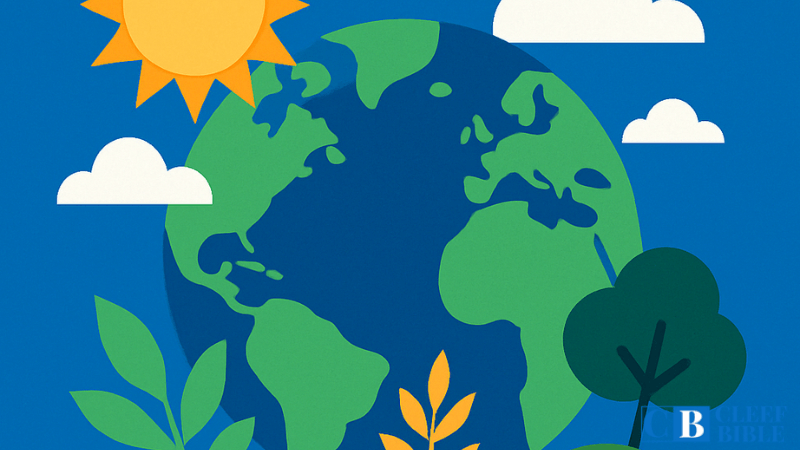
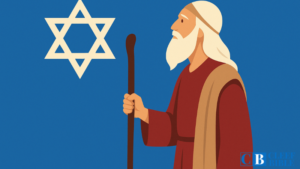


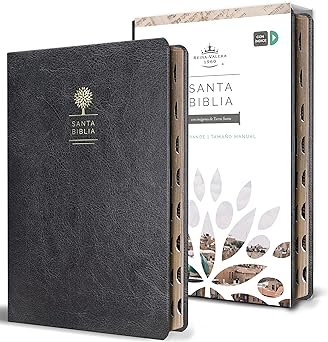









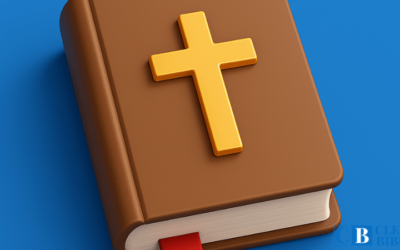




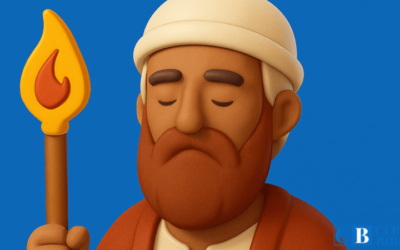




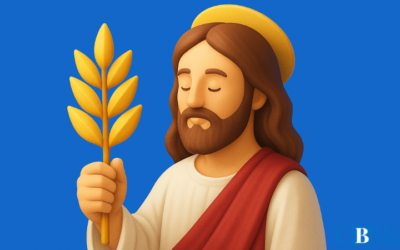
0 Comments